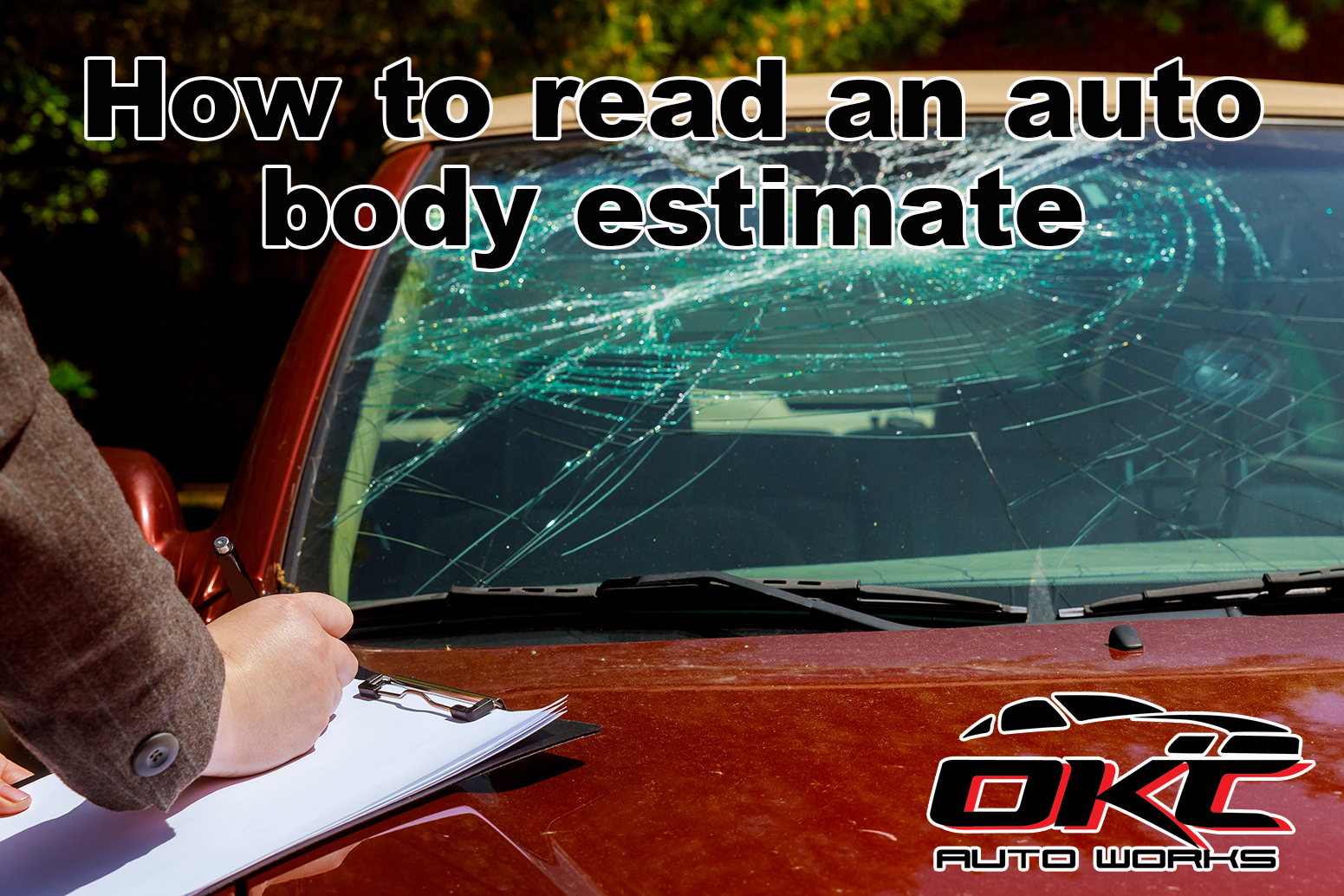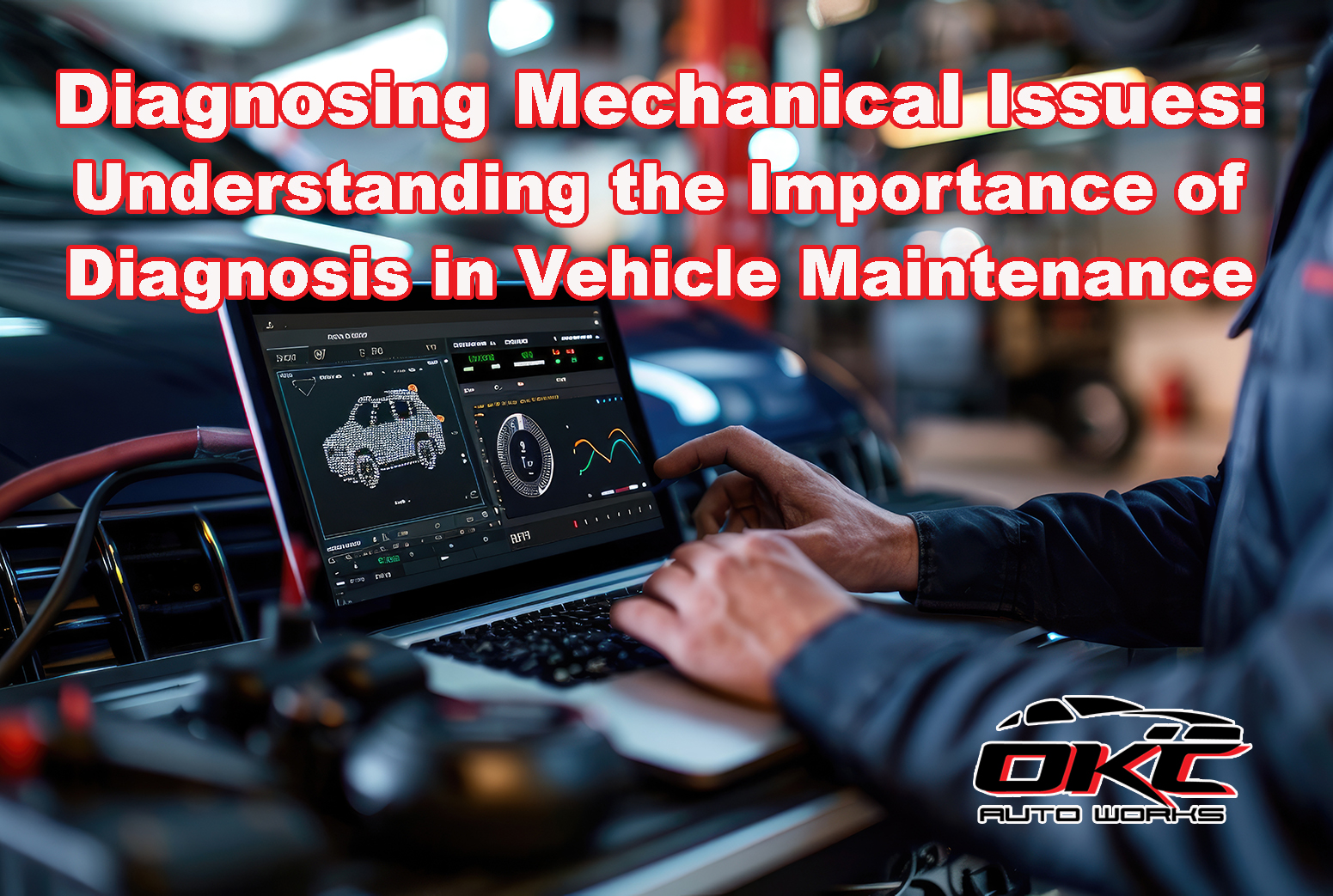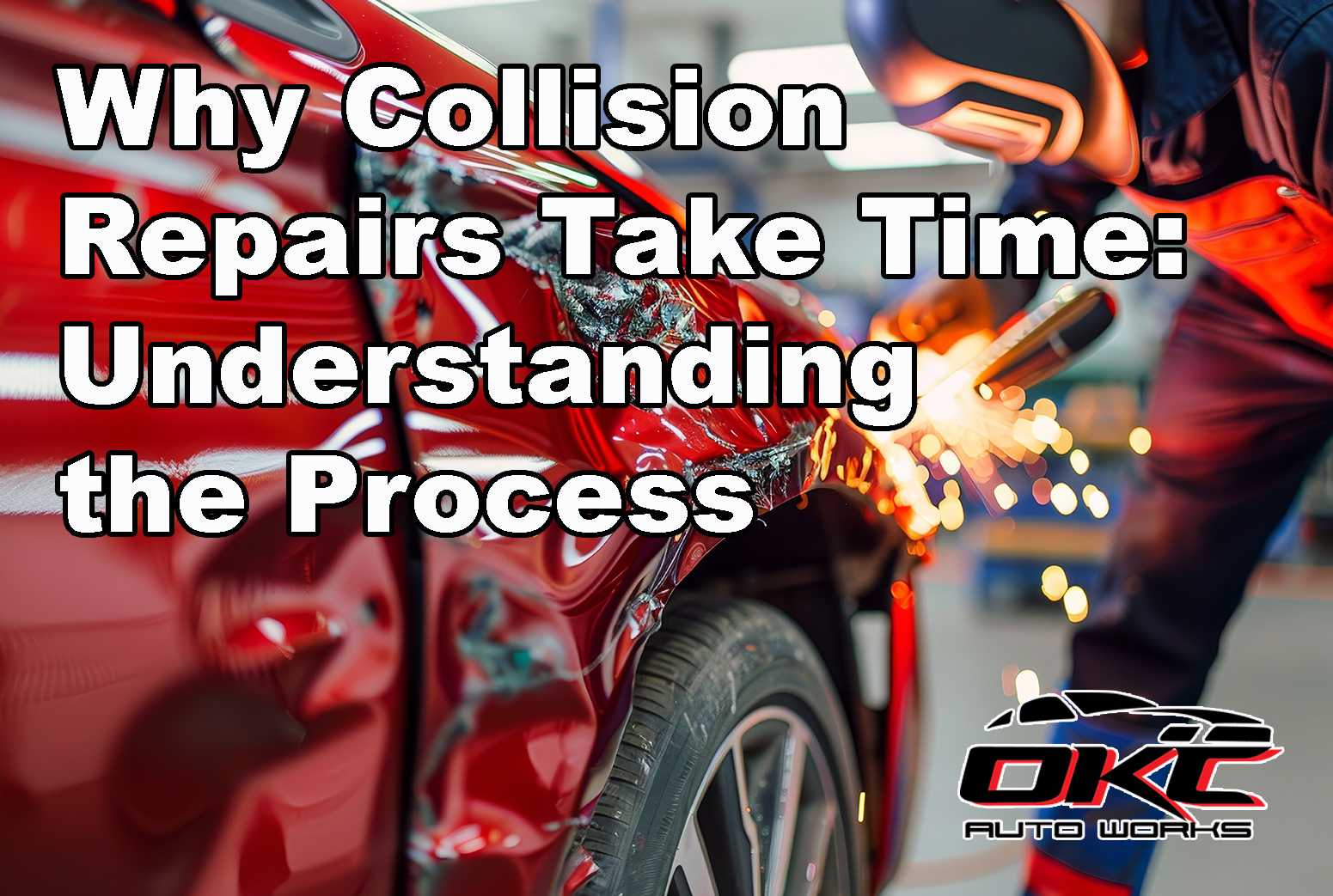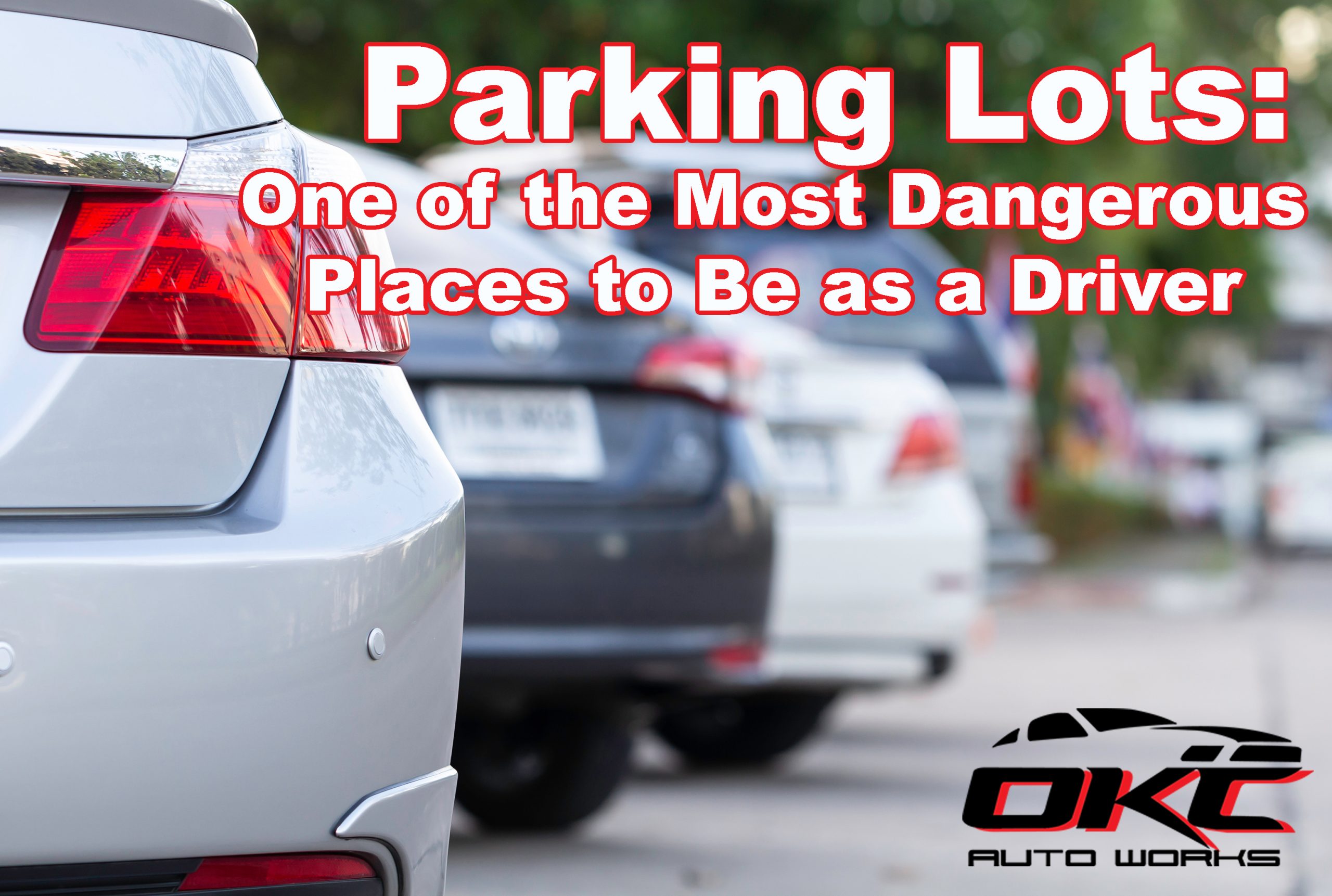Our estimators try to take their time and explain the estimates that they write for customers, but even so, we know from experience often customers can still be confused. This especially may be the case when they show the estimate to someone else and try to reexplain what they were told. The average person in involved in some type of fender bender maybe once every 7 years; its therefor unrealistic to expect them to be able to read an estimate like a pro. For many it may just look like a collection of numbers and acronyms that make no sense. It is for this reason we decided it was time to write an article explaining how to read an estimate. No more trying to break the secret auto body code, y’all, just read below to learn how to read an auto body repair estimate, which we will break down by section.
How to read an auto body estimate: Top Section
The top section of the estimate is generally for basic information. This section is straight forward and easy to comprehend. It may have such things on it such as the date the damage was sustained, as well as your deductible amount. Additionally, it will have some essential information on it such as:
- Your name.
- Your address and phone number.
- Your car’s information – year, make, model, and color.
- Your insurance company’s data, such as your claim number and the name of your adjuster.
How to read an auto body estimate: Middle Section
The middle part contains the line items and descriptions. This is the section that gives the details of the entire repair process broken down. It is the more complicated part of the estimate and can vary some from shop to shop on how they choose to tackle the repair. It is basically a numerical list that describes the damaged components or items that will need to be dealt with as part of the repair. Next to each line item you will see a description, numbers, and acronyms. Since this is where people get most confused, we will take this time to address what each acronym means.
How to read an auto body estimate: Common Body Shop Acronyms
A/M – Means ‘aftermarket’ In automotive terms, ‘aftermarket’ means replacing a part made by a different manufacturer than who made the original part for the vehicle. At times, this may be necessary as apart from the original manufacturer may not be available. Aftermarket parts typically cost less than original manufactured parts. While you can request that aftermarket parts not be used, if your repair is being paid for by insurance and depending on your auto insurance policy, you may be asked to pay the price difference. When your insurance policy is paying the bill, those parameters for what the insurance company will pay were determined when you purchased the insurance policy from your agent – this is not determined by the auto body shop, so if you do not wish to deal with aftermarket parts on your vehicle discuss with your insurance agent and get a rider put on your auto policy if necessary.
B% – Known as ‘betterment.’ Remember that insurance is designed to put your back to where you were, not in an improved state. Thus, betterment refers to the percentage an insurance company will pay after deducting for the part’s wear and tear, or depreciation. For example, if your car had tires that were two years old, your insurance may apply betterment for the replacement of new tires. Customers often get annoyed with betterment fees and even feel it is unfair, but from the insurance company’s point of view, they are replacing an old tire with a new one thus putting you in a better position than before the accident (and remember that is not what insurance was designed to do).
DED – ‘deductible.’ A deductible paid to an auto body shop is similar to a co-pay you would pay at a doctor’s office. The amount of your deductible was determined when you purchased your auto insurance policy. The auto body shop does not set your deductible, so if you believe your deductible is too high that is a discussion to have with your insurance agent. In all cases, your deductible is the amount of the repair total that is your portion to pay.
DRP – ‘Direct Repair Program’. A DRP refers to body shops that are part of an insurance company’s network. This is the body shop your insurance company may recommend you use for repairs, however; you ARE NOT required to choose them. The benefit of using a DRP shop can be ease of estimate, slightly lower time your vehicle will be in the shop, and the ability to have the insurance company advocate on your behalf if the body shop does not perform a quality repair. OKC Auto Works is a DRP shop for almost all of the larger name recognized insurance companies, as well as many smaller ones and fleet coverages.
FEA – ‘front end alignment.’ While not all repairs require an alignment, if your car’s damage includes misaligned wheels, you may need front end alignment. You may see the acronym FWA on your estimate or in some cases you will see 4WA, which refers to alignment for all four wheels.
LKQ – ‘Like-Kind-Quality’. LKQ usually refers to used parts from salvaged or non-operational vehicles that have a part of the same quality and in the same pre-accident condition. This may be done instead of replacing with an aftermarket part. There are a few reasons as to why you may have an LKQ part called for on the estimate. It may be a means of replacing with an OEM part without causing a betterment or it could be that the original part is unavailable.
LT – ‘left side’, as in the left side of a vehicle.
OEM – ‘Original Equipment Manufacturer’. Much of the time you will see “OEM parts” on an estimate. If given the choice, most body shops prefer to use OEM parts. For example, if you drive a Ford truck and you saw OEM Parts on your estimate, that would mean those parts are being replaced with Ford parts specifically, rather than an aftermarket part of LKQ part.
O/H – ‘overhaul.’ Overhaul means taking apart a component or undoing its assembly. While you may see this in conjunction to a few things, most commonly you will see it referring to the bumper assembly.
R & I – ‘remove and install.’ In certain situations, a whole part may need to be removed to repair hidden damage. R & I means that the undamaged part will be removed and re-installed to fix another issue. You will typically see R&
R & R – ‘remove & replace’. You will see this if they are replacing a part or panel on your vehicle.
RT – ‘right side’, as in the right side of a vehicle.
Sublet – means ‘subcontracting’, you will often see this when there is a mechanical repair that they will use a third-party mechanic to perform the repair. Sometimes you will see this instead of FER or 4WA as most of the time a body shop will send those out rather than doing those inhouse. Of course, since OKC Auto Works has an in-house mechanical repair shop, its less common to see such on our estimates, however; most body shops do not have an in-house mechanic on staff or a mechanical repair shop.
How to read an auto body estimate: Bottom Section
The last part of your estimate contains the numbers for labor and total costs associated with the overall repair. This section may also include “customer responsibility,” which refers to your deductible payment, betterment totals, and any other out of pocket costs that may apply to you at the end of the repair.
Your deductible will adjust the total amount of repairs. For example, if the cost is $10,000 and your deductible is $500, your deductible payment will offset the total cost and make it a net total of $9,500.
Not All Car Accident Damage is Alike
Every auto accident is different and unique in some way. For this reason, you want to use a quality body shop that has experience working with all types of makes and models of vehicles. You want to choose a body shop that has a solid reputation for high quality and great service. OKC Auto Works ensures that all our technicians are certified and receive education regularly to stay ahead of the curve when it comes to the latest and greatest in auto body repair and restoration, as well as best practices within the industry. Our staff works hard to provide the best customer experience possible. We are dedicated to ensuring the best possible repair for our customers and clients.
We hope you find this guide helpful, and always if you have any questions or need to schedule a repair or estimate, we are just a phone call away! (405) 634-8200




